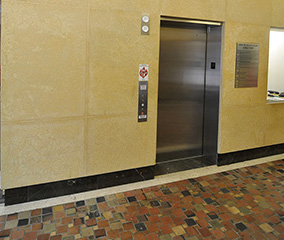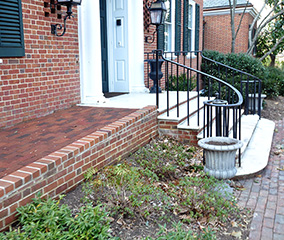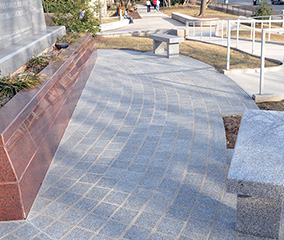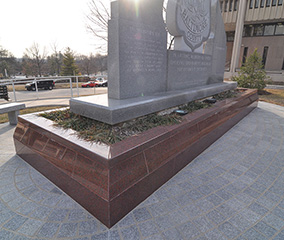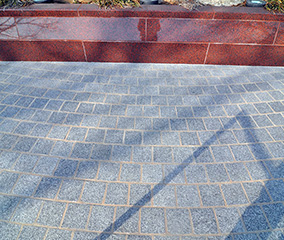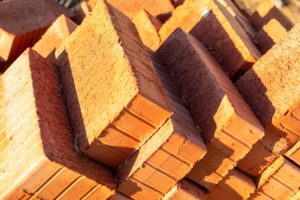
Learn more about the different types of brick and how they are used.
There are numerous types of bricks to use when constructing a new brick building. Every kind of brick has its own advantages and drawbacks, so it is helpful to be familiar with the types of brick before deciding which best suits your needs. At DelPrete Masonry, our masonry experts understand the differences between all brick types and use our knowledge to guide our constructions and restorations.
Burnt Brick: Four Classes
Clay bricks can be divided into burnt clay bricks and unburnt clay bricks. Burnt bricks are used more commonly for construction purposes, and they have four different classes that dictate the overall strength, appearance, and shape of the brick. The classes are:
- First-Class: The best quality, with a smooth surface and well-defined edges, is best for permanent constructions.
- Second-Class: Good strength and durability, but less smooth and with rougher edges.
- Third-Class: These are much rougher and do not hold up as well when exposed to water and weather long-term. These are best for temporary structures.
- Fourth-Class: These are often recycled and rarely used for construction.
Engineering Bricks
Engineering bricks are made with incredibly high temperatures, producing a high density in them. They are highly durable and heat and water-resistant. These types of brick are commonly used for basement construction and civil engineering projects due to their water resistance.
Concrete Bricks
Concrete bricks are often a popular alternative to burnt clay bricks. Concrete bricks are made with cement, sand, coarse aggregates, and water. These types of brick can be pigmented during production to achieve the ideal color. This gives them a beautiful color and super strength. They can block heat and noise and resist water quite well. However, their color may fade faster than clay bricks.
Fly Ash Bricks
These bricks are made with fly ash and water. They are highly weather-resistant and offer superior frost prevention, fire insulation, and water resistance. These bricks also have a smooth surface and are a great solution for use in areas that might be vulnerable to water pressure, cold temperatures, or risk of fire.
Sand Lime Bricks
Sand lime bricks, often called calcium silicate bricks, are used for construction and masonry works. These bricks consist of sand, lime, and fly ash bonded through a chemical process. The result is a brick that is very strong, durable, and able to bear a lot of weight without cracking. These reliable bricks can effectively resist water, wind, and heat over long periods.
Sun-Dried Bricks
Sun-dried bricks, or unburnt clay bricks, are just what they sound like: clay bricks dried by sun exposure. They are not often used for permanent construction as they do not have long-term strength. Instead, they are a less expensive and convenient option for temporary structures. Because they are softer, they are less resistant to the effects of bad weather.
CONTACT DEL PRETE MASONRY TODAY!
Whether you are ready to start your next masonry project or are still hesitant and have questions, Del Prete Masonry is here to help. We have the experience and expertise to get it right the first time. Questions? Want to visit some of our residential or commercial projects? Ready to set up a consultation? Feel free to give us a call at 410-683-0650 or visit us online. We are happy to serve Baltimore City and County, Harford County, Carroll County, Anne Arundel County, and Howard County. To see examples of our work and to keep up with our new and exciting projects, be sure to follow us on Facebook, Twitter, and Pinterest.
Tags: brick, Brick Construction, types of brick












